- Qualcomm Launches Snapdragon 4 Gen 2 Mobile Platform
- AMD Launches Ryzen PRO 7000 Series Mobile & Desktop Platform
- Intel Launches Sleek Single-Slot Arc Pro A60 Workstation Graphics Card
- NVIDIA Announces Latest Ada Lovelace Additions: GeForce RTX 4060 Ti & RTX 4060
- Maxon Redshift With AMD Radeon GPU Rendering Support Now Available
A Look At Intel’s Core i9-7900X X-Series 10-core Processor

We take Intel’s latest and greatest CPU, the 10-core 20-thread i9-7900X, through our gauntlet of tests, as we get to grips with a new platform, X299. Shaving off $700 from the original 10-core desktop CPU, the i7-6950X, Intel offers more than just a simple clock boost to keep it competitive, such as with the inclusion of AVX512.
Page 3 – Rendering: (3ds Max 2015 & 2017), Blender, Cinebench, POV-Ray
(All of our tests are explained in detail on page 2.)
Design and rendering is one of the greatest areas of computer benchmarking to highlight the benefits of faster hardware, whether it be a CPU, GPU, memory, and even storage. On a low-end system, a production render might take hours, for example, whereas on a high-end system, that render could be shaved down to a few minutes.
With these results, it’s up to you to gauge where the best value can be found. In some cases, it might be beneficial to go with more modest hardware if the time-to-render isn’t of a great concern; in other cases, spending more on faster hardware might actually save you money in the long-run.
For our rendering tests, we use Autodesk’s 3ds Max (2015, for SPECapc, and 2017, for our real-world model render), the popular open source design suite Blender, as well as Cinebench and POV-Ray for some quick-and-dirty results.
Autodesk 3ds Max 2015 & 2017
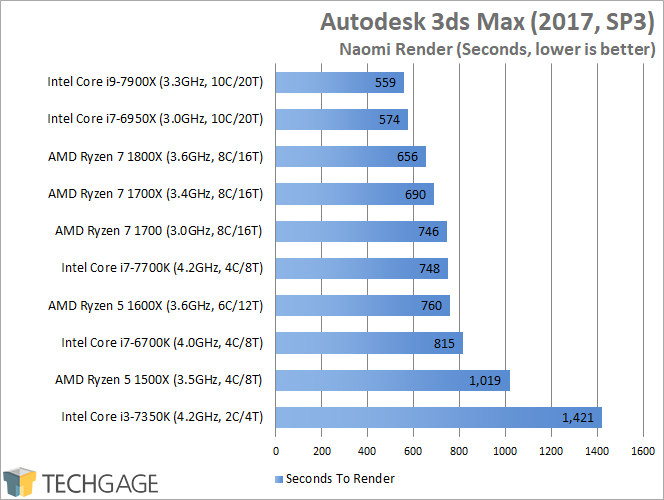
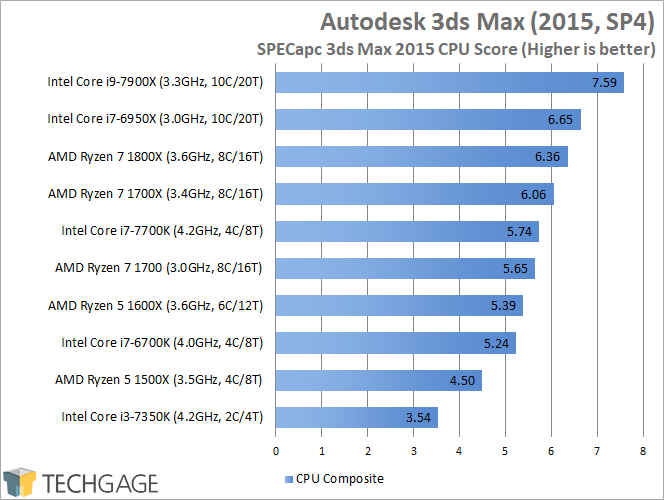
In SPEC’s benchmark, the 7900X performs notably better than last-gen’s 6950X, but in the real-world model render, only slight gains are seen.
Blender
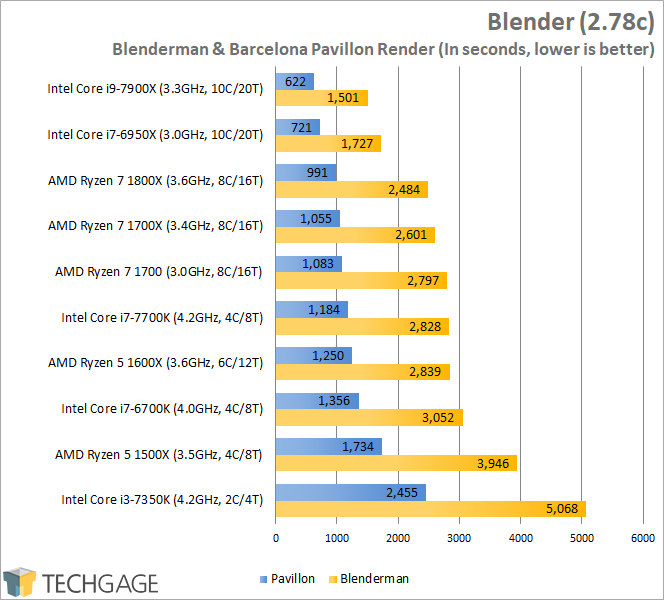
While tepid gains were seen in the 3ds Max render, larger gains are exhibited in Blender, with both of its scenes. Scenes, which by the way, are available for free, allowing you to test your PC against the one that generated the results above (defaults are used).
Synthetic Renderers: Cinebench, POV-Ray
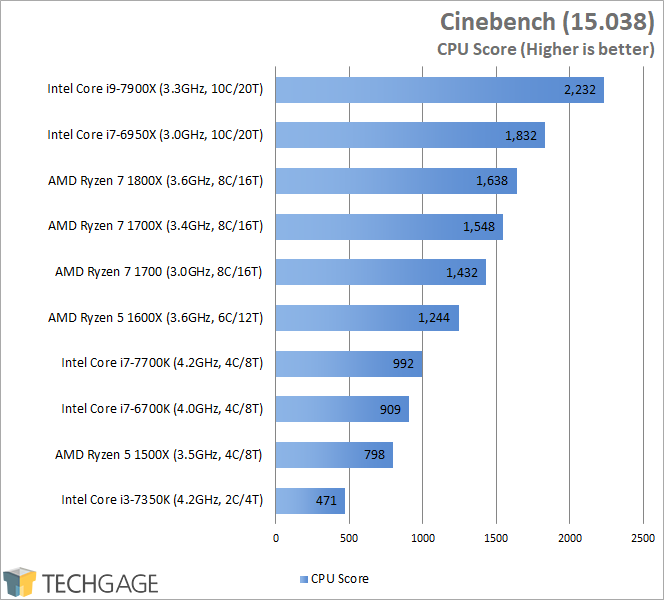
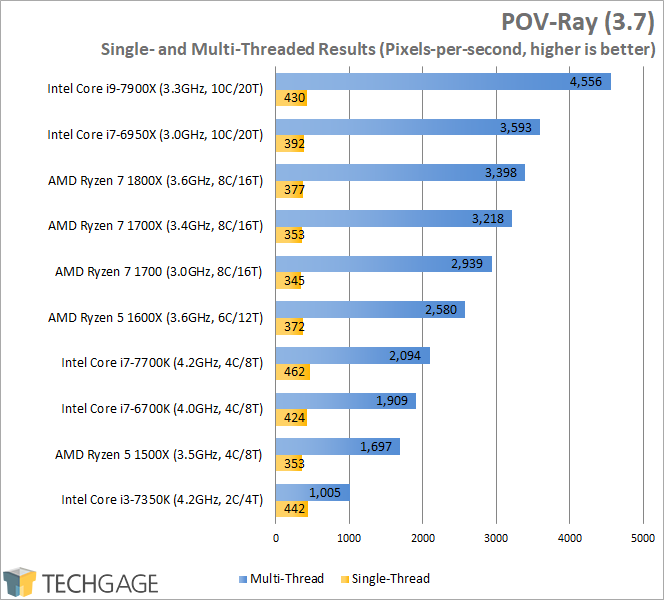
As covered earlier, the i9-7900X peaks all of its cores at 4.0GHz at load, which is a 500MHz gain over how the i7-6950X exercised its cores. The results of that difference can be seen above, with a huge leap from one generation to the next. The slightly faster memory (400MHz, for DDR4-3200) might play a role here, but it wouldn’t represent a gain close to this by itself.
Support our efforts! With ad revenue at an all-time low for written websites, we're relying more than ever on reader support to help us continue putting so much effort into this type of content. You can support us by becoming a Patron, or by using our Amazon shopping affiliate links listed through our articles. Thanks for your support!





